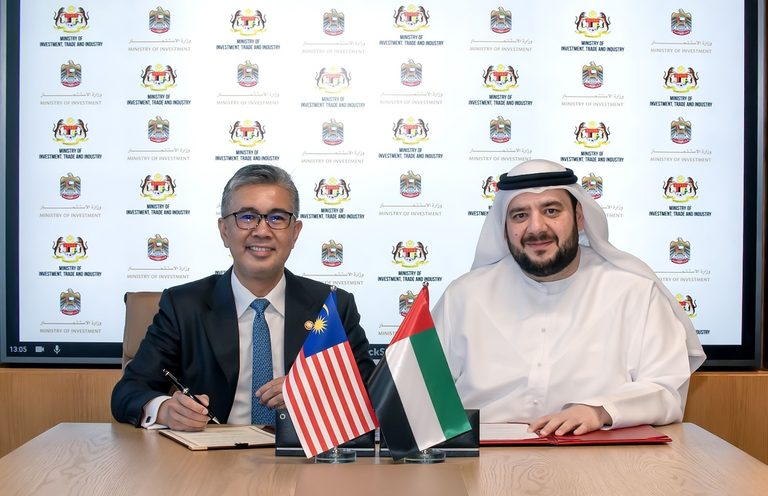- Malaysia and UAE to sign Cepa
- Framework to invest in data centres
- Cooperation on renewable energy
The UAE is expected to sign a free trade deal with Malaysia by the end of June as the latter courts more investment to develop its digital economy.
Talks on establishing a comprehensive economic partnership agreement (Cepa) began last year and Tengku Zafrul Abdul Aziz, Malaysia’s minister of investment, trade and industry, said the two countries are close to finalising the deal.
“The UAE is Malaysia’s second-largest Middle Eastern trade partner and trade could be further boosted by a UAE-Malaysia Cepa, expected by mid-2024,” said Alana Li, Middle East research analyst at think tank Asia House.
“Beyond the Cepa, we also expect to see expanding cooperation in renewable energy and digital infrastructure, with Malaysia hoping to attract increased Emirati sovereign wealth fund investment in these sectors,” she told AGBI.
Li’s comments follow the signing of an agreement between the UAE’s Ministry of Investment and the Ministry of Investment, Trade and Industry of Malaysia to establish a framework for investment into data centres in Malaysia.
Investments will bolster Malaysia’s New Industrial Master Plan 2030, which prioritises promoting digitalisation across key sectors.
- Gulf’s pivot to Asia set to keep on rolling in 2024
- Southeast Asia on the rise as UAE shifts trade focus
- UAE and Malaysia seek to grow $4.6bn trade with Cepa talks
Data centres are essential for organisations to store crucial data and operate applications.
Malaysia operates more than 40 data centres, with the sector anticipated to witness a compound annual growth rate of 16 percent to 2027, reaching nearly $3 billion.
Mohamed Hassan Alsuwaidi, the UAE’s minister of investment, said the planned increase in the number of data centres will elevate Malaysia’s standing as one of the emerging data hubs in southeast Asia.
Aziz said the UAE partnership “will certainly help strengthen our position as a preferred destination for digital investments”.
He said Malaysia is well-positioned to capture a significant portion of Asean’s digital economy, forecast to reach $1 trillion by 2030.
In its latest Article VI consultation with Malaysia, published on Sunday, the International Monetary Fund emphasised the importance of promoting digitalisation, including “carefully leveraging the benefits of artificial intelligence”.
 WAM
WAMNon-oil trade between the UAE and Malaysia exceeded $2.2 billion in the first half of 2023.
The UAE is Malaysia’s second-largest trading partner in the Middle East after Saudi Arabia, constituting around a third of its overall trade with Arab nations, while Malaysia is ranked eighth among non-Arab Asian countries for UAE exports.
Li said renewable energy was also a growth sector for the bilateral relationship, In December, Masdar signed an implementation roadmap with the Malaysian Investment Development Authority to help develop 10GW of clean energy projects in Malaysia.
Mubadala Energy is also working on expanding production capacity at the Pegaga gas field off the coast of Sarawak, Malaysia, chief operating officer Stefano Raciti told Reuters last month.
Asean ties
The UAE-Malaysia relationship is part of growing ties with the wider Asean bloc of 10 countries that also includes Brunei, Cambodia, Indonesia, Laos, Myanmar, the Philippines, Singapore, Thailand and Vietnam.
Trade grew 46 percent to $67 billion between 2021 and 2022, with the UAE targeting the region with its Cepa programme.
In May 2022 the UAE signed a Cepa with Indonesia, which came into force in September 2023, while a similar agreement with Cambodia was activated at the end of January.
Negotiations have also been started with the Philippines and Vietnam, the latter finalising terms on a deal to build on bilateral trade worth nearly $9 billion.
